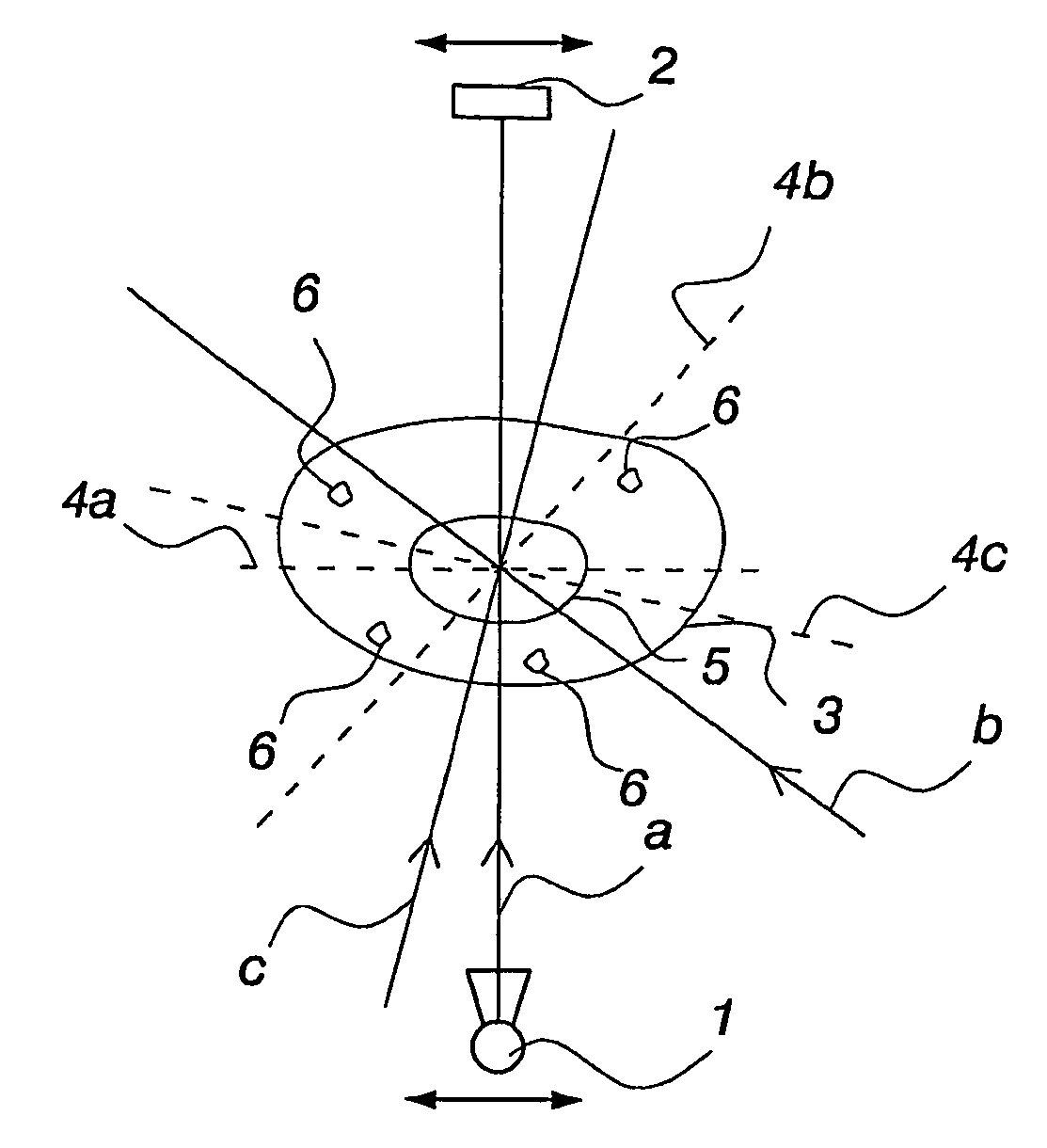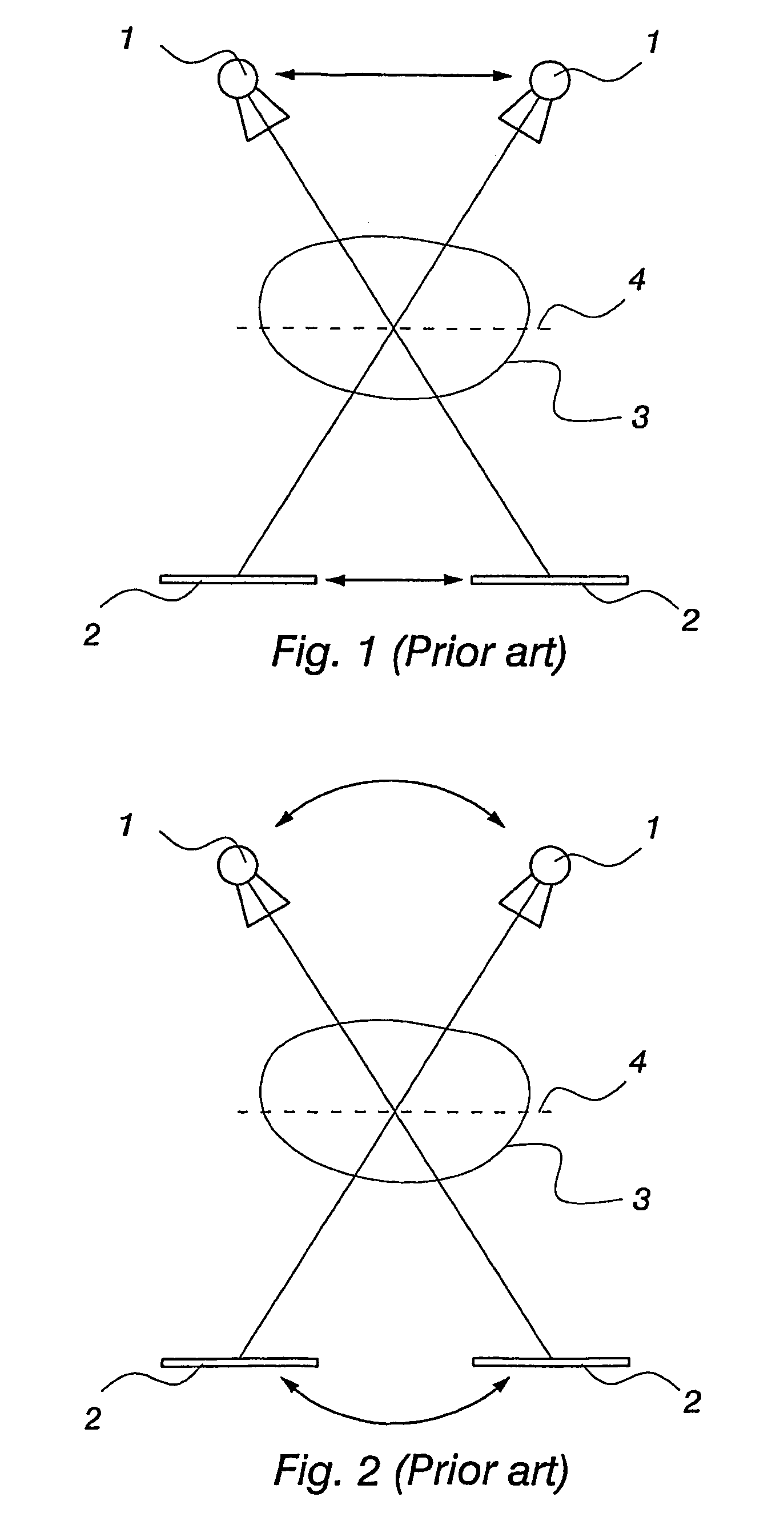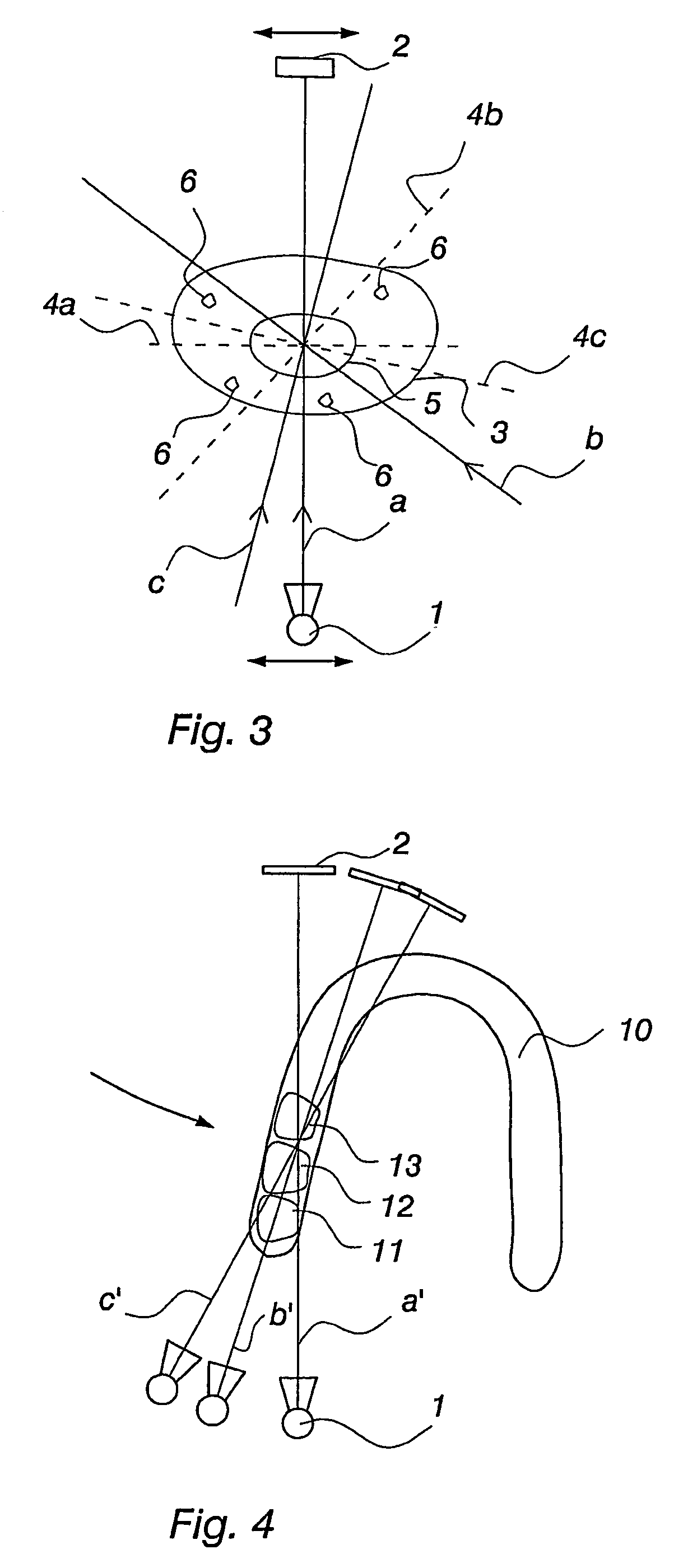Method for producing a three-dimensional digital x-ray image
- Summary
- Abstract
- Description
- Claims
- Application Information
AI Technical Summary
Benefits of technology
Problems solved by technology
Method used
Image
Examples
Embodiment Construction
[0015]FIG. 1 shows diagrammatically the principle of conventional tomosynthetic imaging. Reference numeral 1 denotes the x-ray source, reference numeral 2 the detector receiving the radiation that has passed through the object of imaging 3, and reference numeral 4 the in-focus plane. Moving the radiation source 1 and the detector 2 simultaneously, at the same speed, in opposite directions will produce sharp image areas on the in-focus plane 4, whereas distant objects become blurred. FIG. 2 shows another conventional method for implementing tomosynthetic imaging. In this method, the x-ray source 1 and the detector 2 are at a fixed distance from one another, turning as an integrated unit around the in-focus plane 4.
[0016]FIG. 3 shows diagrammatically a method of implementation according to the invention. Of the region of interest 5 inside the object 3 being imaged is first taken—for example from three directions a, b and c—a tomosynthetic slice image along the corresponding in-focus p...
PUM
 Login to View More
Login to View More Abstract
Description
Claims
Application Information
 Login to View More
Login to View More - R&D
- Intellectual Property
- Life Sciences
- Materials
- Tech Scout
- Unparalleled Data Quality
- Higher Quality Content
- 60% Fewer Hallucinations
Browse by: Latest US Patents, China's latest patents, Technical Efficacy Thesaurus, Application Domain, Technology Topic, Popular Technical Reports.
© 2025 PatSnap. All rights reserved.Legal|Privacy policy|Modern Slavery Act Transparency Statement|Sitemap|About US| Contact US: help@patsnap.com



